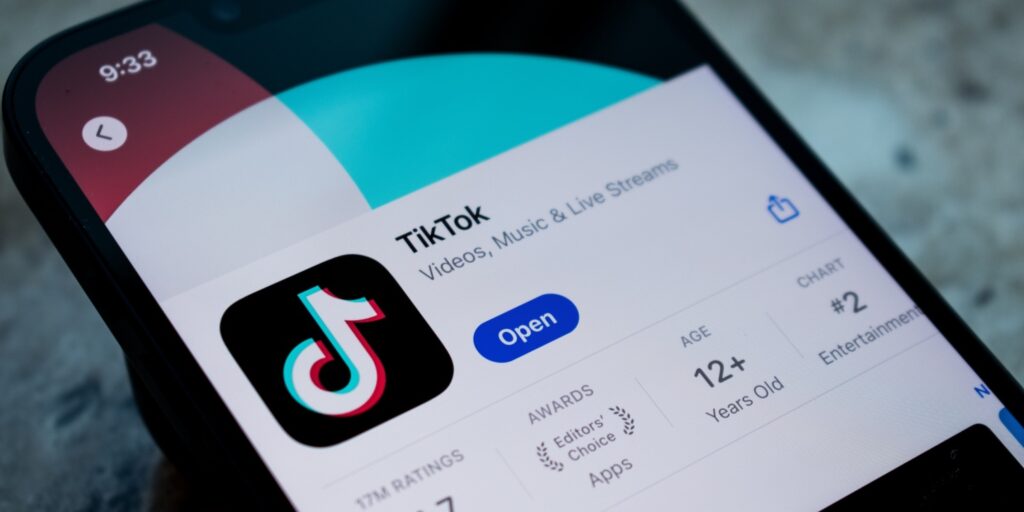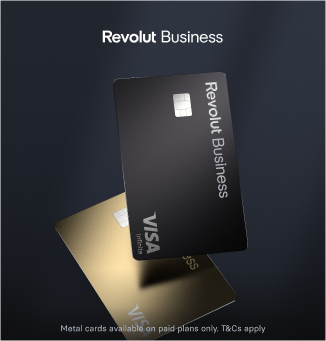TikTok is known for captivating users with short videos, keeping them scrolling endlessly through tailored content that matches their likes and interests. The TikTok algorithm quickly learns which type of content users enjoy at any given moment, instantly delivering exactly what they want to see.
But it’s so much more than speedy videos. Audiences can engage in live streams with their favourite brands and creators and even do their online shopping directly through the app. For many, particularly younger users, TikTok has become a go-to search engine, often favoured over Google for its engaging visual results.
The platform’s popularity and extensive features offer small businesses significant growth opportunities. Brands can leverage influencer partnerships, build a meaningful community, and promote their products and services in one place. Read on to learn how small businesses can make the most of TikTok.
Key Takeaways
- Small businesses can grow with TikTok by collaborating with influencers, encouraging user-generated content, and promoting their products on TikTok Shop.
- Community engagement should be a priority and is the key to success.
- A community focus, keyword research, frequent posting, and performance analysis are paramount to growing a small business with TikTok.
Promoting products on TikTok
TikTok is perfect for small businesses looking to attract new customers whilst driving sales. Here are the main ways to do this:
1. Collaborate with influencers
Working with social media influencers is a powerful way for people to discover your products on TikTok. It’s a common misconception that influencer marketing is only effective if you collaborate with ‘mega influencers’ with millions of followers. However, content creators at such a high level are expensive, making them inaccessible to small businesses.
Instead, look for micro or nano influencers with up to 100,000 followers. Not only are their services more affordable, but you might find them easier to work and maintain a personal relationship with.
- Marketing your UK small business from overseas
- Excessive online returns and how to reduce them
- 10 marketing strategies for small businesses
The best way to find suitable TikTok influencers is to browse the app for content creators who feature similar products to yours. Pay attention to their content style and personality to ensure they can connect with your audience.
2. Encourage user-generated content (UGC)
TikTok is the ideal platform to leverage UGC for authentic product promotion. As the name suggests, UGC is created by users, not brands. It includes videos, images, testimonials, tutorials, hashtags, and mentions.
UGC is particularly powerful on TikTok, as it aligns with its sense of community. Users expect to see real people, real reviews, and honest opinions. These elements promote trust, often making UGC more engaging and persuasive than branded content.

To generate UGC for TikTok, actively reach out to your customers and ask them to share their experience with your brand. Chances are that they’re already TikTok users and will be more than happy to share a quick video of their purchase – especially if they’ve had a positive experience with you.
3. Use TikTop Shop
TikTok Shop is a marketplace feature that allows businesses, content creators, and affiliates to sell products directly through the app. Users can browse, pay for their orders, and message sellers all in one place.
If you’ve visited TikTok Shop before, you’ll notice it’s quite busy. So, how exactly can a small business stand out? We recommend:
- Leading with short-form videos
- Using relevant hashtags – these are like keywords, which make it easier for customers to find your products
- Adding shoppable links to your TikTok videos that feature the item(s) you want to promote
- Offering a discount – prices are incredibly competitive on TikTok Shop, so it’s worth offering a promotion to entice customers
- Creating a digital storefront for your small business to make it easier for customers to discover and purchase your products via TikTok Shop
- Trialling live shopping events that allow viewers to engage and shop in real-time
It’s also worth activating a sponsored advertising campaign. You can tailor ads to your individual budget and marketing goals.
Used in conjunction with organic media, TikTok insights show that paid ads boost brand likeability by over 20%, more than double brand awareness, and increase purchase likelihood by more than 60%.
Additionally, TikTok’s survey on European SMEs revealed that TikTok helped 42% of SME sellers achieve more from their ad spend. A third (34%) also said their sales have increased due to advertising on TikTok.
If you’re new to TikTok Shop, look at the TikTok Shop Academy. Here, you’ll find plenty of free courses, teaching you everything you need to know as a seller – from managing products to using promotional tools.
Things to consider when selling on TikTok Shop
Depending on what you sell, selling on TikTok may not be viable. We mentioned that prices are incredibly competitive, and TikTok Shop is generally associated with low-priced products that are quick to make and ship.
If you sell inexpensive items and can fulfil orders quickly, then it’s worth giving TikTok Shop a try. Otherwise, if your products are handcrafted, made to order, and take a few days to make, you might struggle to get noticed on TikTok Shop.
4 tips for success on TikTok
TikTok can feel a little overwhelming for new businesses. If in doubt, here are the top rules of thumb we recommend sticking to:
1. Focus on community
Community engagement is paramount on TikTok. Instead of focusing solely on sales, you should prioritise building genuine connections here, and sales should feel like a natural byproduct of that.
If you’re entirely new to TikTok or are unsure how to find your community, you might find it helpful to divide it into two key groups: ‘stay’ and ‘play’ communities.
‘Stay’ communities are niche-focused. You’d naturally expect to engage with these groups for the long term. For example, if you run a local cafe, your ‘stay’ community might be #FoodTok.
Meanwhile, ‘play’ communities are trend-driven and generally offer short-term engagement. For example, if you own a beauty brand, your ‘play’ community might be #grwm (get ready with me) or #makeup. That said, ‘play’ communities aren’t any less valuable than ‘stay’ communities, as ‘play’ groups offer quick visibility and trend-based marketing.
Also, look for and support other small business owners on TikTok. Building relationships is crucial for entrepreneurs, and engaging with other founders on social media is an excellent way to take advantage of the app’s community focus and spread brand awareness.
2. Target the right keywords
Another way to grow on TikTok is to target the right keywords, ensuring you reach relevant communities. This can be overwhelming initially if you have no social media or digital marketing experience.
A great way to get started is to use TikTok’s Keyword Insights tool. This simple analytics app displays what TikTok users are searching for. You can browse by country, industry, and business objectives.
We recommend the Creator Search Insights tool inside the TikTok app for more tailored keyword insights. Type ‘creator search insights’ into the search bar and click ‘view’ beside the lightbulb icon. You’ll then see your suggested keywords, content gaps, and content ideas based on your activity.

Once you’ve narrowed your keywords, tag your videos with hashtags to reach relevant groups and add clear call-to-actions (CTAs) to encourage meaningful engagement.
3. Consistency is key
Like any other social media platform, consistency is key. Posting regularly on TikTok keeps your audience engaged and reassures them that you’re active, ultimately building trust.
But there’s no use in posting when your audience is least likely to see it. Inside the TikTok app, you’ll find an analytics dashboard showing you when your followers are most active. Use this data as a starting point to create a regular and impactful posting schedule.
Then, focus on adapting your videos to current trends. Remember that trends emerge quickly and generally only last a couple of weeks. So, keeping up with these movements is essential for maximum exposure and engagement.
Unlike Instagram or Facebook, where you might post two or three times a week, TikTok’s fast pace means you must post more frequently – multiple times a day.
This frequency can be difficult for small businesses with limited resources to keep up with, so we recommend using scheduling tools to automate most of the work. One of the best social media scheduling apps is Hootsuite.
Tried and tested by 1st Formations‘ Social Media Team, we think it’s the most user-friendly, quick and easy to learn. You can:
- Use the integrated AI assistant to generate content ideas
- Schedule TikTok posts in bulk ahead of time (Hootsuite will also suggest the best times to post to maximise discoverability)
- View and reply to comments
- Generate AI-powered, optimised image and video descriptions
- See recommended hashtags
4. Track and optimise performance
Performance tracking and optimisation are essential for growth. We mentioned the analytics dashboard earlier – this is also where you’ll see other key metrics like video views, engagement activity and rate, follower growth, audience reach, and your key demographics.
You can also compare individual video performance to see which videos performed well and what you can improve.
Author's Tip
Have you tried the TikTok Shop Partners feature? It can put you in touch with e-commerce experts and external agencies who can help you develop the ideal TikTok marketing solutions for your business.
If you launch a sponsored campaign, be sure to review its performance in detail, too. Check which benchmarks you met, exceeded, or missed, and determine how you can adapt the next campaign to strengthen those results.
You have all the insights you need to grow your small business on TikTok at your fingertips. Review them regularly to refine your strategy and create content that resonates with your audience.
Transform your small business with TikTok
We hope this guide has given you the confidence to tap into TikTok’s immense potential for small business growth. It’s ideal for forming influencer partnerships and driving meaningful engagement whilst benefitting from a sales boost.
Remember to think community first on TikTok, conduct keyword research to target the right hashtags, post regularly and frequently, and track your performance to keep improving and optimising your TikTok strategy.
Thanks for reading. If you have any questions or comments about the topics discussed above, please share them below. Don’t forget to explore the 1st Formations blog for more business tips and advice articles like this.
Please note that the information provided in this article is for general informational purposes only and does not constitute legal, tax, or professional advice. While our aim is that the content is accurate and up to date, it should not be relied upon as a substitute for tailored advice from qualified professionals. We strongly recommend that you seek independent legal and tax advice specific to your circumstances before acting on any information contained in this article. We accept no responsibility or liability for any loss or damage that may result from your reliance on the information provided in this article. Use of the information contained in this article is entirely at your own risk.














Join The Discussion